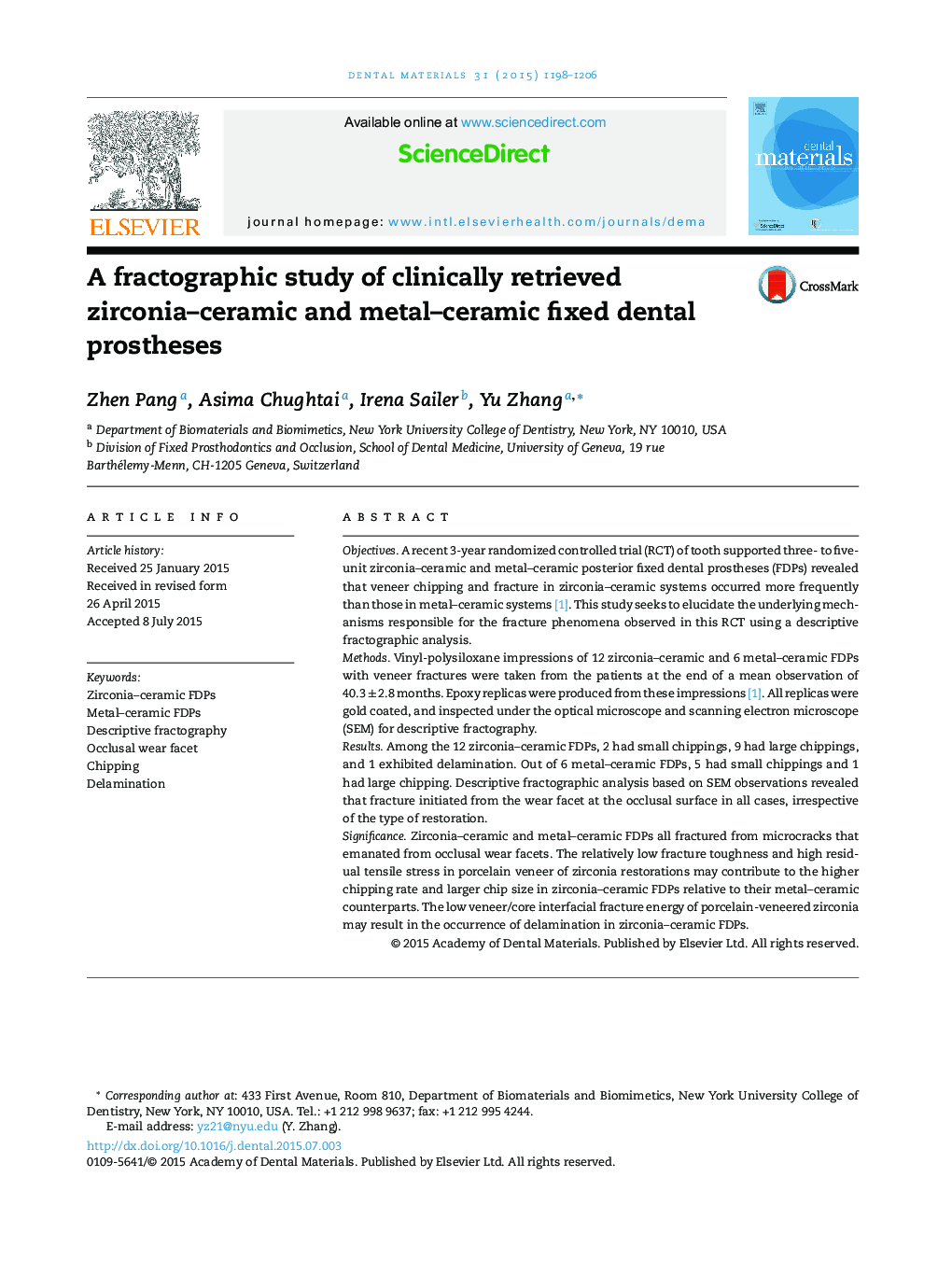| کد مقاله | کد نشریه | سال انتشار | مقاله انگلیسی | نسخه تمام متن |
|---|---|---|---|---|
| 1420536 | 986370 | 2015 | 9 صفحه PDF | دانلود رایگان |
• Veneer chipping was the prominent fracture mode in clinically retrieved zirconia–ceramic and metal–ceramic fixed dental prostheses.
• All fracture initiated at the occlusal wear facets.
• Zirconia–ceramic exhibited a higher rate of veneer fracture with larger chip sizes relative to their metal–ceramic counterparts.
ObjectivesA recent 3-year randomized controlled trial (RCT) of tooth supported three- to five-unit zirconia–ceramic and metal–ceramic posterior fixed dental prostheses (FDPs) revealed that veneer chipping and fracture in zirconia–ceramic systems occurred more frequently than those in metal–ceramic systems [1]. This study seeks to elucidate the underlying mechanisms responsible for the fracture phenomena observed in this RCT using a descriptive fractographic analysis.MethodsVinyl-polysiloxane impressions of 12 zirconia–ceramic and 6 metal–ceramic FDPs with veneer fractures were taken from the patients at the end of a mean observation of 40.3 ± 2.8 months. Epoxy replicas were produced from these impressions [1]. All replicas were gold coated, and inspected under the optical microscope and scanning electron microscope (SEM) for descriptive fractography.ResultsAmong the 12 zirconia–ceramic FDPs, 2 had small chippings, 9 had large chippings, and 1 exhibited delamination. Out of 6 metal–ceramic FDPs, 5 had small chippings and 1 had large chipping. Descriptive fractographic analysis based on SEM observations revealed that fracture initiated from the wear facet at the occlusal surface in all cases, irrespective of the type of restoration.SignificanceZirconia–ceramic and metal–ceramic FDPs all fractured from microcracks that emanated from occlusal wear facets. The relatively low fracture toughness and high residual tensile stress in porcelain veneer of zirconia restorations may contribute to the higher chipping rate and larger chip size in zirconia–ceramic FDPs relative to their metal–ceramic counterparts. The low veneer/core interfacial fracture energy of porcelain-veneered zirconia may result in the occurrence of delamination in zirconia–ceramic FDPs.
Journal: Dental Materials - Volume 31, Issue 10, October 2015, Pages 1198–1206
